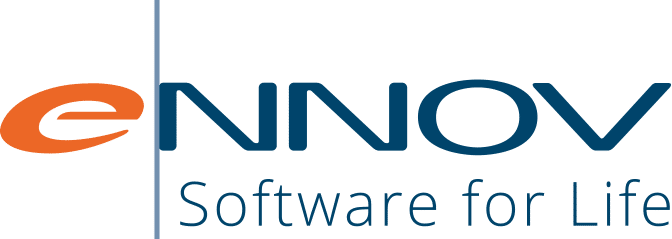The global clinical research landscape is undergoing a transformative shift with the adoption of ICH E6(R3)—the much-anticipated revision of the International Council for Harmonization’s (ICH) Good Clinical Practice (GCP) guidelines. As clinical trials grow more complex and decentralized, ICH E6(R3) is poised to modernize the principles of trial design, conduct, and oversight in ways that promote both participant safety and data integrity.
Why ICH E6(R3) Matters
First adopted in 1996, ICH E6(R1) established a unified standard for GCP across ICH regions. However, over the past two decades, clinical trials have evolved dramatically; with the rise of digital tools, remote monitoring, real-world data, and increased patient centricity. While ICH E6(R2), adopted in 2016, introduced concepts like risk-based monitoring and sponsor oversight, many stakeholders felt that a more fundamental rethink was needed.
ICH E6(R3) is that rethink.
Key Principles of ICH E6(R3)
The E6(R3) guidelines reflect a principles-based approach, enabling more flexible, fit-for-purpose implementation. The draft guideline—comprising a new overarching “Principles” document and two annexes (Annex 1 for interventional trials and a future Annex 2 for non-traditional or observational studies)—emphasizes the following:
Proportionality and Flexibility
The guideline encourages tailoring trial conduct and oversight to the nature and risks of the trial, rather than enforcing a rigid, one-size-fits-all standard.
Technology-Enabled Trials
E6(R3) recognizes the widespread use of digital technologies such as electronic informed consent (eConsent), decentralized trial models, and electronic health records (EHRs), paving the way for more agile and participant-friendly trials.
Quality by Design (QbD)
The new guideline underscores designing trials with quality in mind from the outset, focusing on what matters most to participant safety and data reliability.
Transparency and Accountability
Roles and responsibilities across sponsors, investigators, and service providers are more clearly articulated, promoting robust oversight and ethical conduct.
Modernized Informed Consent
The principles reaffirm the centrality of informed consent and allow for more dynamic and interactive consent models that are better suited to the needs of diverse populations.
Adapting to Decentralized Clinical Trials (DCTs)
ICH E6(R3) marks a critical step forward in supporting the growing shift toward decentralized clinical trials (DCTs). These hybrid or fully remote models offer greater convenience for patients, broader geographic access, and operational efficiencies, but they also introduce new challenges in data management, oversight, and participant engagement.
Here’s how E6(R3) helps organizations adapt to DCTs:
Recognition of Digital Modalities
E6(R3) explicitly acknowledges tools such as eConsent, remote source data verification, wearable devices, and telehealth visits; legitimizing their use and encouraging best practices for validation and compliance.
Risk-Based Oversight for Remote Models
By emphasizing risk-based quality management, E6(R3) enables sponsors and CROs to build flexible oversight plans that accommodate the decentralized nature of DCTs, focusing monitoring efforts on the most critical trial components.
Participant-Centered Design
The principles of E6(R3) align with the goals of DCTs: greater patient convenience, reduced burden, and improved retention. The guidance encourages early and ongoing engagement with participants, especially when novel technologies or home-based procedures are used.
Clarified Accountability
As clinical responsibilities are distributed across investigators, telehealth providers, home nursing services, and digital platforms, E6(R3) reinforces the need for clearly defined roles, responsibilities, and communication pathways.
Organizations looking to adopt or expand decentralized models should align their DCT strategy with the principles of E6(R3), ensuring their processes are both flexible and GCP-compliant. This includes validating digital tools, documenting decision rationales, training staff, and incorporating remote data into risk-based monitoring strategies.
What Adoption Means for Stakeholders
The shift to E6(R3) presents both opportunities and challenges for industry stakeholders:
- Sponsors and CROs will need to adapt SOPs, training programs, and vendor oversight models to align with the new guidance.
- Regulators are expected to harmonize their expectations around risk-based approaches, digital tools, and flexible trial designs.
- Sites and Investigators may benefit from clearer expectations and better tools to support participant engagement and trial conduct.
- Technology Providers can anticipate increased demand for validated, GCP-compliant platforms that facilitate decentralized and hybrid trials.
Global Rollout and Next Steps
The ICH released the draft E6(R3) Guideline for public consultation in 2023, with final version released by ICH members in January 2025. Final implementation will vary by regulatory authority, but momentum is building, with agencies like the FDA and EMA already aligning future inspection expectations with E6(R3)’s principles.
In parallel, work on Annex 2 is progressing, with the goal of providing tailored guidance for trials that fall outside traditional interventional designs; like pragmatic, real-world, or registry-based studies.
Preparing for the Future
Adopting ICH E6(R3) is more than a regulatory update—it’s an opportunity to embrace a new mindset centered on flexibility, patient centricity, and continuous quality improvement. Organizations that invest early in training, systems modernization, and process alignment will be well-positioned to lead in the new era of clinical trials.
For decentralized clinical trials, E6(R3) provides a much-needed regulatory foundation that enables innovation without sacrificing integrity. The future of GCP is here: risk-based, tech-enabled, and participant-focused.


